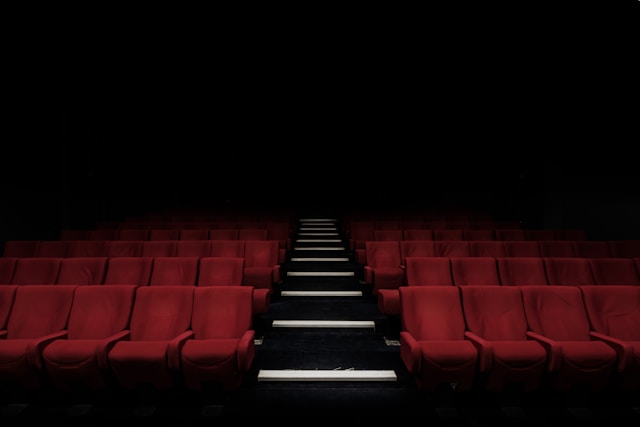Virtual Set Design
Virtual Reality is revolutionizing set design by creating virtual environments that actors can interact with during rehearsals. These virtual sets can be crafted to replicate real-world locations or fantastical settings, allowing actors to familiarize themselves with their environment long before stepping onto a physical set.
“Using VR for set design has transformed how we plan our scenes. Actors can walk through the sets virtually, getting a feel for the space and making the actual shoot much more efficient,” says production designer Ian Mitchell.
Enhanced Collaboration
Virtual Reality also facilitates remote collaboration among actors, directors, and production teams. By immersing themselves in a shared virtual space, team members can brainstorm, rehearse, and fine-tune performances without being physically present. This capability is especially beneficial in a globalized industry where talent and crew are often spread across different locations.
“Virtual collaboration tools have broken down geographical barriers, allowing us to work seamlessly with talent from around the world,” explains director Lisa Chang.
Motion Capture in Animation and Gaming
Motion Capture technology has significantly impacted animation and gaming, enabling the creation of lifelike characters and realistic movements. In animated films, MoCap allows animators to capture the intricate details of an actor’s performance, translating it into animated characters that move and express emotions authentically.
In the gaming industry, MoCap is used to bring characters to life with fluid and realistic movements. This technology enhances the gaming experience by making characters more relatable and immersive.
“The use of MoCap in gaming has taken character animation to a whole new level, providing players with a more engaging and realistic experience,” notes game developer Alex Ford.
Training and Development
Actor Training Programs
With the integration of VR and MoCap, actor training programs are evolving to include these technologies in their curricula. Acting schools and workshops now offer courses that teach actors how to perform in MoCap suits and interact with VR environments. These programs help actors develop the skills needed to excel in a technology-driven industry.
“Training with VR and MoCap prepares actors for the future of filmmaking, giving them a competitive edge in the industry,” says acting coach Rachel Greene.
Performance Analysis
VR and MoCap also provide tools for detailed performance analysis. Directors and coaches can review an actor’s movements and expressions in real-time, offering precise feedback and suggestions for improvement. This level of analysis ensures that performances are refined and optimized.
“Real-time feedback through MoCap systems allows us to fine-tune performances and achieve the best possible results,” explains motion capture technician Sam Wright.
Accessibility and Inclusivity
Inclusive Casting
The use of VR and MoCap is opening doors for actors with disabilities by creating more inclusive casting opportunities. Virtual auditions and MoCap performances can be tailored to accommodate actors with different physical abilities, ensuring that everyone has an equal chance to participate.
“Technology is making the industry more inclusive, allowing actors with disabilities to showcase their talents in new and innovative ways,” states inclusion advocate Lisa Moore.
Breaking Barriers
By breaking down physical and logistical barriers, VR and MoCap are democratizing the acting industry. Actors from diverse backgrounds and locations can now audition for roles and participate in productions without the need for costly travel or relocation.
“These technologies are leveling the playing field, giving all actors the opportunity to be seen and heard,” remarks casting agent Tom Parker.
Expanding Narrative Possibilities
Interactive Storytelling
Virtual Reality is paving the way for interactive storytelling, where audiences can become active participants in the narrative. In VR experiences, viewers can influence the story’s outcome by making choices and interacting with the environment, creating a more personalized and immersive experience.
“Interactive storytelling through VR is transforming how we engage with audiences, making them a part of the story rather than passive observers,” says storyteller and VR creator Amanda Lee.
Complex Character Development
Motion Capture allows for the creation of complex characters that would be impossible to portray with traditional methods. From fantastical creatures to highly detailed digital humans, MoCap enables actors to bring a wide range of characters to life with authenticity and depth.
“MoCap expands the boundaries of character creation, allowing actors to explore roles that transcend human limitations,” explains character designer Mike Benson.
Environmental Impact
Sustainable Production Practices
The use of VR and MoCap can also contribute to more sustainable production practices. Virtual sets reduce the need for physical set construction and location shoots, cutting down on resource consumption and waste. Additionally, remote collaboration tools decrease the need for travel, reducing the industry’s carbon footprint.
“Adopting VR and MoCap technologies can lead to more environmentally friendly production processes, aligning the industry with global sustainability goals,” says environmental consultant Claire Adams.
Conclusion
The integration of Virtual Reality and Motion Capture in modern acting is revolutionizing the entertainment industry. These technologies enhance performance quality, facilitate collaboration, and expand the creative possibilities for storytelling. While challenges remain, the benefits of VR and MoCap are driving their adoption across film, animation, and gaming.
As these technologies continue to evolve, they will undoubtedly shape the future of acting, making it more dynamic, inclusive, and sustainable. Embracing VR and MoCap is not just about keeping up with technological advancements but about pushing the boundaries of what is possible in the world of entertainment.
